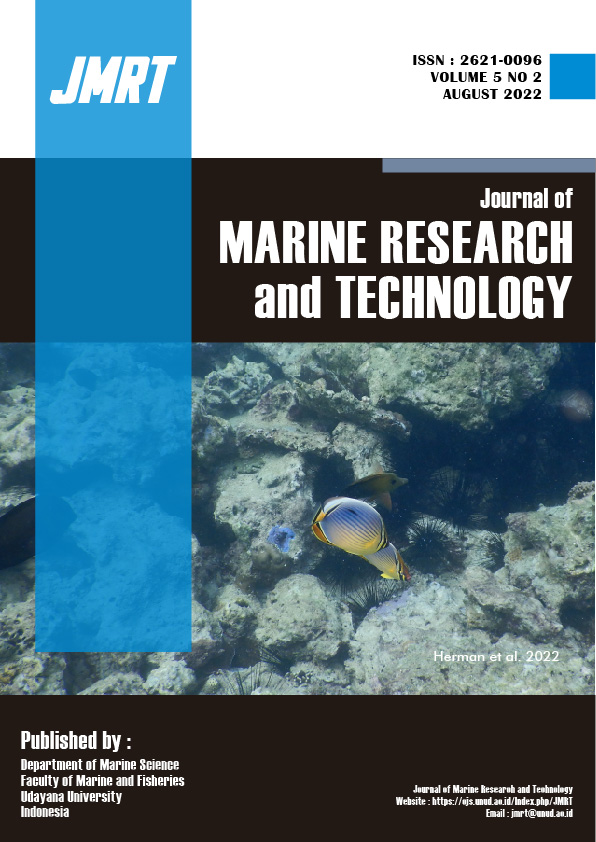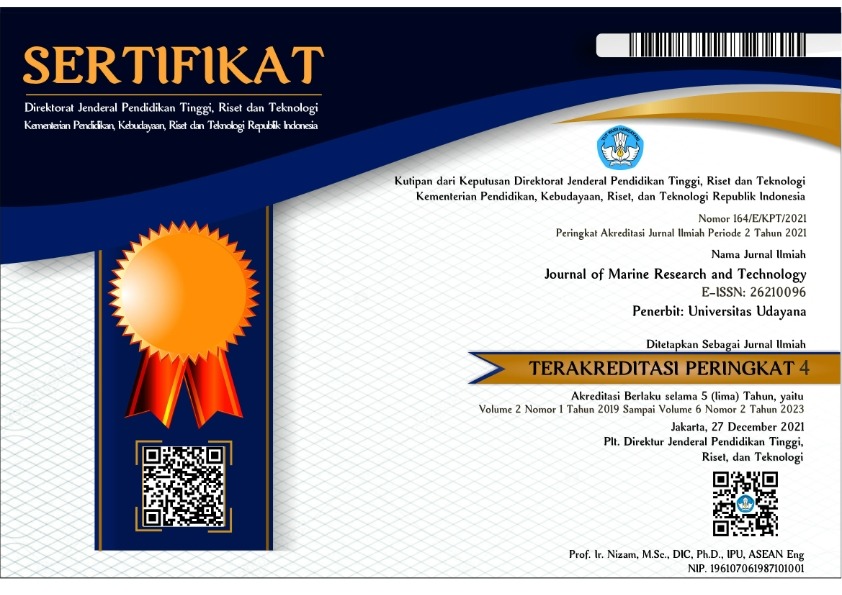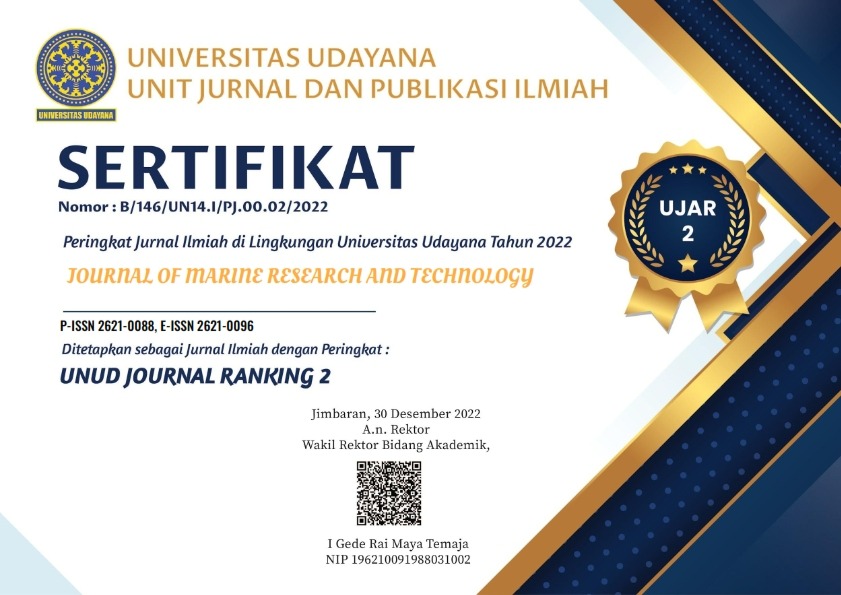Potensi Terjadinya Banjir Rob Akibat Penurunan Muka Tanah dan Kenaikan Muka Air Laut di Kabupaten Badung, Bali
Badung; tidal flood; Sentinel-1; SBAS-DInSAR; land subsidence
Abstract
Badung Regency is one of the tourist areas crowded with visitors, so that development continues to be developed as a support for tourist areas, one of which is a hotel. Hotel construction can cause building loads in a certain period; it can cause land subsidence. Land subsidence that co-occurs with sea-level rise can potentially be a tidal flood in the future. This study aimed to determine the rate of land subsidence in Badung Regency and the potential for tidal flooding due to land subsidence and sea-level rise in Badung Regency. The method used to calculate the rate of land subsidence is Small Baseline Subset Differential Interferometric Synthetic Aperture Radar (SBAS-DInSAR), which utilizes radar satellite imagery data Sentinel-1a IW level 1.1 images and Sentinel-1b IW level 1.1 images. The image data used in the SBAS-DInSAR method consists of 166 image data and Digital Elevation Model (DEM) data with a spatial resolution of 30 m which is used for the topographic phase removal phase. Meanwhile, land subsidence data is used to determine the potential for tidal flooding, and it is predicted using regression; then, an overlay is carried out with the highest tide data along with the value of sea-level rise every year. To facilitate the observation of land subsidence, the daily image data obtained are then averaged into monthly data in each village. The fastest land subsidence rate from 2014 to 2020 occurred in Tuban Village. The prediction of the most significant tidal flood in 2030 to 2040 will occur in Tuban Village due to the influence of rapid land subsidence in the village.
Downloads
Copyright Notice
The copyright to this article is transferred to Journal of Marine Research and Technology (JMRT). The copyright transfer covers the exclusive right and license to reproduce, publish, distribute and archive the article in all forms and media of expression now known or developed in the future, including reprints, translations, photographic reproductions, microform, electronic form (offline, online) or any other reproductions of similar nature.






